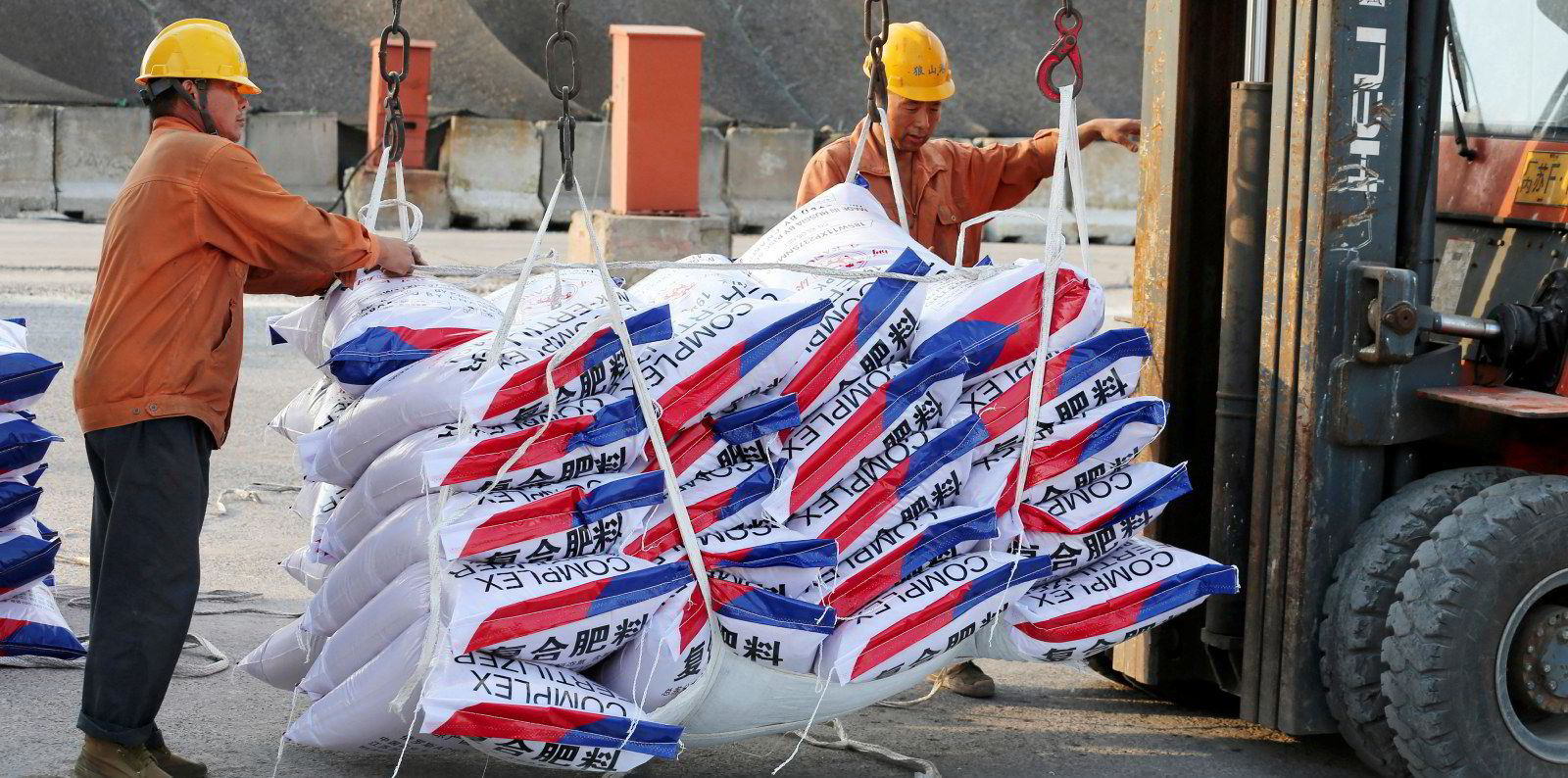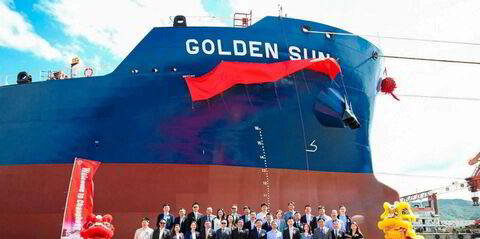Russian fertiliser has so far dodged Western sanctions since the invasion of Ukraine, but seaborne trade patterns have undergone key changes that are making the market increasingly politically driven.
Since Russia invaded Ukraine a year ago, there have been concerns that any stoppage in Russian exports could compound the pre-existing global shortage in fertiliser and worsen the picture for global food supplies.
Increasingly, international relations are playing into export destinations, according to Harry Grimes, dry cargo research analyst at Arrow Shipbroking, with Russian fertiliser heading to countries considered politically friendly to Moscow.
“Brazil, India and China are the top three importers of Russian fertiliser so far this year; the growing export volumes are heading to more politically aligned countries,” Grimes told TradeWinds.
“However, the changing trade flows have not impacted average voyage distances, which are unchanged across the global fertiliser trade. Russian fertiliser voyage distances have inched up; however, [excluding] Russia, voyage distances have gone down.”
Other changes to the seaborne fertiliser trade — mainly the preserve of handysize and supramax bulk carriers — since the war broke out have made it increasingly isolated.
Some shipowners that would otherwise have regularly called in Russia have opted to avoid trade in the country on moral grounds. This has left its mark.
“The self-sanctioning activity means the few owners willing to call Russia now rarely deviate to perform other trades,” Mark Nugent, dry cargo analyst for Braemar Shipbroking, told TradeWinds.
“In several ways, this is now a separate market, as these owners can consistently earn premiums to the index if solely loading Russian cargoes.”
Although the market has become siloed, volumes have increased.
“From March to December 2022, Russian fertiliser exports increased by 14.3% year on year to 16.9m tonnes,” Nugent told TradeWinds.
There have been tweaks in importers’ buying habits since the war began. Shipments to Europe declined by just 2.1% year on year to 1.9m tonnes from March to December last year, according to Braemar.
Voracious buyer
India has become a more voracious buyer of Russian fertiliser then ever, importing 3.7m tonnes during this nine-month period, Nugent said. “This is nearly four times greater than shipments across the same period in 2021,” he added.
But what of the year ahead?
“Overall, we expect volumes to stabilise in 2023 following what was a surge in shipments last year,” Nugent said.
“Important to note is the decline in natural gas prices has improved margins for other producers, which may have cut capacity last year and put more reliance on the seaborne market. With this situation easing, these producers can now start to increase output again and import less.”
On the supply side, the fertiliser industry has been hit by a production crunch in Europe caused by high natural gas prices, Chinese trade restrictions and disruptions due to sanctions on Russia and Belarus, which is a major potash producer.
These factors caused the global seaborne fertiliser trade to fall year on year by 8% during 2022, according to Clarksons Research.
The World Bank has estimated that 70% of European ammonia production capacity had been reduced or shut down as of October due to high gas prices. Lower prices could allow operations to be resumed at some nitrogen fertiliser production facilities in Europe this year.
Fertiliser prices peaked in early 2022 and remain at historically elevated levels. High prices have caused farmers to cut back on usage, which affected demand last year. Availability still remains an issue for end users.
But the 2022 decline in seaborne fertiliser trade is not expected to be offset by growth any time soon. Clarksons expects fertiliser trade to grow by 1% this year to 178.3m tonnes and a further 3% next year.
Some good news is that global grain supply should not be affected too much this year by wobbles in the fertiliser trade.
“At present, while yields are not looking as strong this year in some cases, according to the USDA [US Department of Agriculture] larger planting areas in several major grain-producing countries should ensure global grain output remains healthy this year and thus export volumes should not be too affected,” Nugent said.




